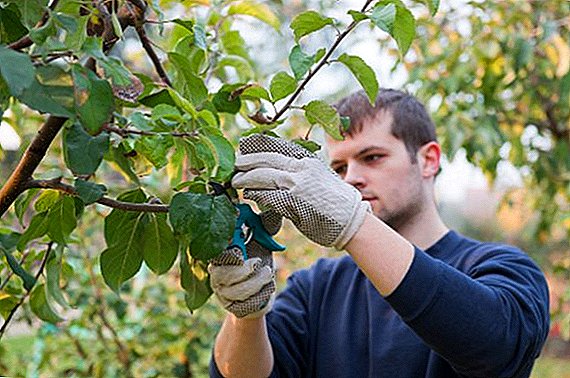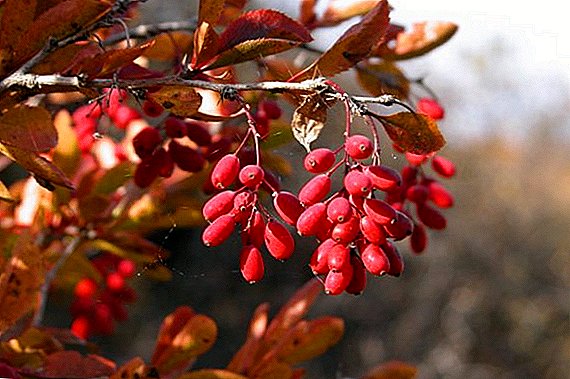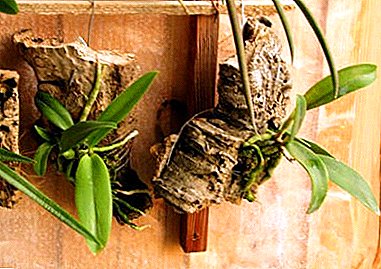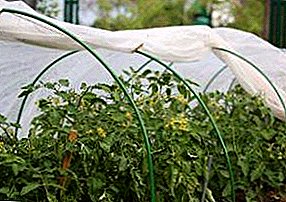 Bright orange color is associated with round and tasty oranges. However, not all oranges are orange.
Bright orange color is associated with round and tasty oranges. However, not all oranges are orange.
There are very tasty representatives of this genus of citrus fruits with red flesh and peel.
Let's try together to figure out where these unusual fruits grow, what they taste and whether they benefit the body.
Description of a bloody or red orange
Red orange is grown in eastern Sicily, around Etna, the largest active volcano in Europe, between the provinces of Catania, Enna and Syracuse. In another locality, their breeding is very difficult. 
Similar citruses are grown in other parts of southern Italy, as well as in Spain, Morocco, Florida and California, but most connoisseurs agree that the original taste of Sicilian oranges cannot be reproduced in a different climate.
The reddish color characteristic of them is due precisely to the proximity of Mount Etna and the special microclimate in this area, above all the large difference in temperature between day and night.
Like the bloody Sicilian orange, citrus crops also include limequat, grapefruit, pomelo, poncirus, suite, lemon, mandarin, citron.Unlike other orange citrus varieties, which contain only carotene (yellow-orange pigment), red oranges also contain anthocyanins. These substances are responsible for the characteristic blood-red color of ripe fruit.
Did you know? Red Orange (aurantium iudicum) was imported into Sicily by a Genoese missionary returning from the Philippines, and was first described by the Jesuit Ferrari in the written work "Hesperides" (1646). Until the 16th century, only orange oranges were cultivated there and only for decorative purposes.

Description of red orange tree:
- The orange tree can reach 12 meters in height. The leaves are fleshy, evergreen, have an elongated shape.
- The flowers are white and very fragrant, dissipating intense odor in the air, very delicate. In Sicily, they are a symbol of purity, and for this reason they are used to decorate wedding ceremonies.
- Orange growing is possible only where the soil is very fertile and the climate is temperate.
- Each citrus tree can produce up to 500 fruits with more or less red color, depending on the variety.
- Their ripening begins in December-January and lasts until May-June in later varieties, so you can eat fresh bloody oranges for most of the year.

Bloody orange varieties:
- "Sanguinello": This variety was discovered in Spain in 1929 and subsequently distributed in other countries. The fruit has a spherical shape with sweet flesh and a rusty orange peel with patches of red. Ripening begins in February, and harvesting takes place between March and April, when the fruits reach optimum maturity. Ideal for juices.

- "Moro": the most interesting variety of all, with pomegranate pulp and very rich sweet-sour taste. Its pale, orange with a rust rind is covered with large blurred wine-colored spots. The fruit has an oval or spherical shape, almost seedless, growing in clusters. Maturation begins in December, opening the orange season from the new crop, and lasts from January to February.

- "Tarocco": first began to grow on the lands of Francophone, located in the province of Syracuse. This is the most valuable variety among the bloody citrus. Fruits are obovoid or spherical in shape, the peel is orange interspersed with red spots, as they mature, the spots expand and become more intense. Maturation begins in December and lasts until May. Variety "Tarako" is more popular than any other red citrus variety, thanks to the wonderful taste and sweetness.

Nutritional value and composition
Chemical composition (in 100 grams of fruit):
- water - 87.2 g;
- protein - 0.7 g;
- lipids (fats) - 0.2 g;
- available carbohydrates - 7.8 g;
- soluble sugar - 7.8 g;
- total fiber - 1.6 g;
- insoluble fiber - 1 g;
- soluble fiber - 0.6 g
Energy value (per 100 g):
- caloric content - 34 kcal (142 kJ);
- edible portion - 80%.

Important! Since one average citrus (100 g) contains only 34 kilocalories, the juice from them inabout the whole world used in diets for weight loss as a low-calorie, but containing a lot of vitamins product.
Due to its excellent characteristics, sweet taste and aroma, this fruit is widely used in food. Its use in cooking is varied, both individually (juice, fruit sliced), and in more complex dishes: snacks, desserts, pies, sweet pastries, in the first and second dishes, in side dishes, salads.
From Sicilian bloody oranges prepare excellent fresh juices.
In the food industry, these fruits are used for the production of juices, candied fruits, jellies, dried fruits and jams.
It is easy to cook marmalade from fresh Sicilian red citrus at home, for this take the flesh, zest and peel of the fruit. Also, housewives make sweet jam or preserves from this orange (with added sugar).  With all the benefits of red (bloody) oranges, in no case do not need to give up all the usual fruit with orange pulp. They also have a mass of beneficial vitamins and minerals.
With all the benefits of red (bloody) oranges, in no case do not need to give up all the usual fruit with orange pulp. They also have a mass of beneficial vitamins and minerals.
Useful properties of red orange
This fruit is effective in treating such diseases:
- phlebeurysm;
- low hemoglobin level;
- viral respiratory diseases;
- alcohol intoxication;
- heart diseases;
- bronchitis;
- hypertension;
- tuberculosis;
- asthma;
- rheumatism;
- pneumonia;
- obesity.
For obesity, it is also recommended to use acacia honey, sea buckthorn leaves, beets, parsley, kale cabbage, and celery root.

Important! It is very useful to use orange juice immediately after squeezing, for 15-20 minutes, if possible, because it retains all the organoleptic characteristics that are lost during prolonged storage.
The main component of Sicilian red citrus is vitamin C, which is:
- strengthens the immune system and is an excellent natural immunostimulant;
- reduces the risk of colds;
- prevents the occurrence of miscarriage in pregnant women;
- promotes adrenal activity;
- helps prevent myocardial infarction and stomach cancer;
- helps mitigate damage to internal organs from smoking;
- stimulates an increase in the level of hemoglobin in the blood, since vitamin C promotes the absorption of iron by the body.
To strengthen the immune system, you can use zizifus, ginger, pumpkin, pomegranate, cherry, garlic.
It also contains vitamin A, vitamins B1, B2, B9, which are useful in preventing the occurrence of genetic defects during fetal development.  It is rich in vitamin P, which increases the strength and elasticity of blood vessels, as well as vitamin E, which protects against cardiovascular diseases (ischemia) and prevents varicose veins and cellulite.
It is rich in vitamin P, which increases the strength and elasticity of blood vessels, as well as vitamin E, which protects against cardiovascular diseases (ischemia) and prevents varicose veins and cellulite.
Red orange contains healthy minerals:
- calcium;
- selenium;
- bromine;
- zinc;
- iron;
- copper;
- phosphorus;
- magnesium;
- potassium.
All of them are good for human health. 
Did you know? In the 19th century, the cultivation of red citrus in Sicily acquired a primary role in the island’s economy, which continues to this day.
Medicinal properties:
- Orange juice has a sedative and anti-depressive effect. Its pulp contributes to good gastrointestinal function; it also has antispasmodic properties.
- Red orange juice is rich in anthocyanins, which, in addition to giving the pulp and peel a typical red color, are excellent antioxidants, remove dead cells from the body, fight free radicals and have anti-aging properties due to the presence of collagen needed to create or repair damaged tissue.
- Anthocyanins also help fight obesity by lowering blood cholesterol and preventing the accumulation of fat that is harmful to health. In conjunction with the digestive element (peptin) they cause a feeling of satiety, helping those who want to lose weight and lose weight.
- These fruits contain: lutein (protects from aggressive sunlight, ultraviolet radiation) and carotene (improves vision).

Who is dangerous red orange
As with any other product, there are also contraindications for the consumption of these fruits.
Who is not recommended to use these fruits:
- Small children under one year of age are not given complementary foods from these fruits in order to avoid dermatological manifestations (rash, diathesis).
- People who have a stomach ulcer or a duodenal ulcer, gastritis, or high acidity can never eat citrus fruits because of their high acid content.
- Diabetics, given the high sugar content of Sicilian bloody oranges, should limit their consumption.
- People who have a pronounced allergic reaction to all types of citrus (urticaria, a tendency to angioedema, and others).
When stomach ulcer can not eat tincture of green walnut, store apple juice, persimmon.Citrus fruits are useful for pregnant women, but doctors do not recommend abusing this group of fruits in the second trimester of pregnancy and during lactation (breastfeeding).

Did you know? The wonderful mosaic of the Villa Del Casale in Piazza Armerina is evidence of the presence of citrus fruits in Sicily already in the Roman Empire.
Given all the wonderful characteristics and useful properties of Sicilian red (bloody) orange, we can safely say that this fruit is a real “pantry of health”. Eat oranges with pleasure and stay healthy!












